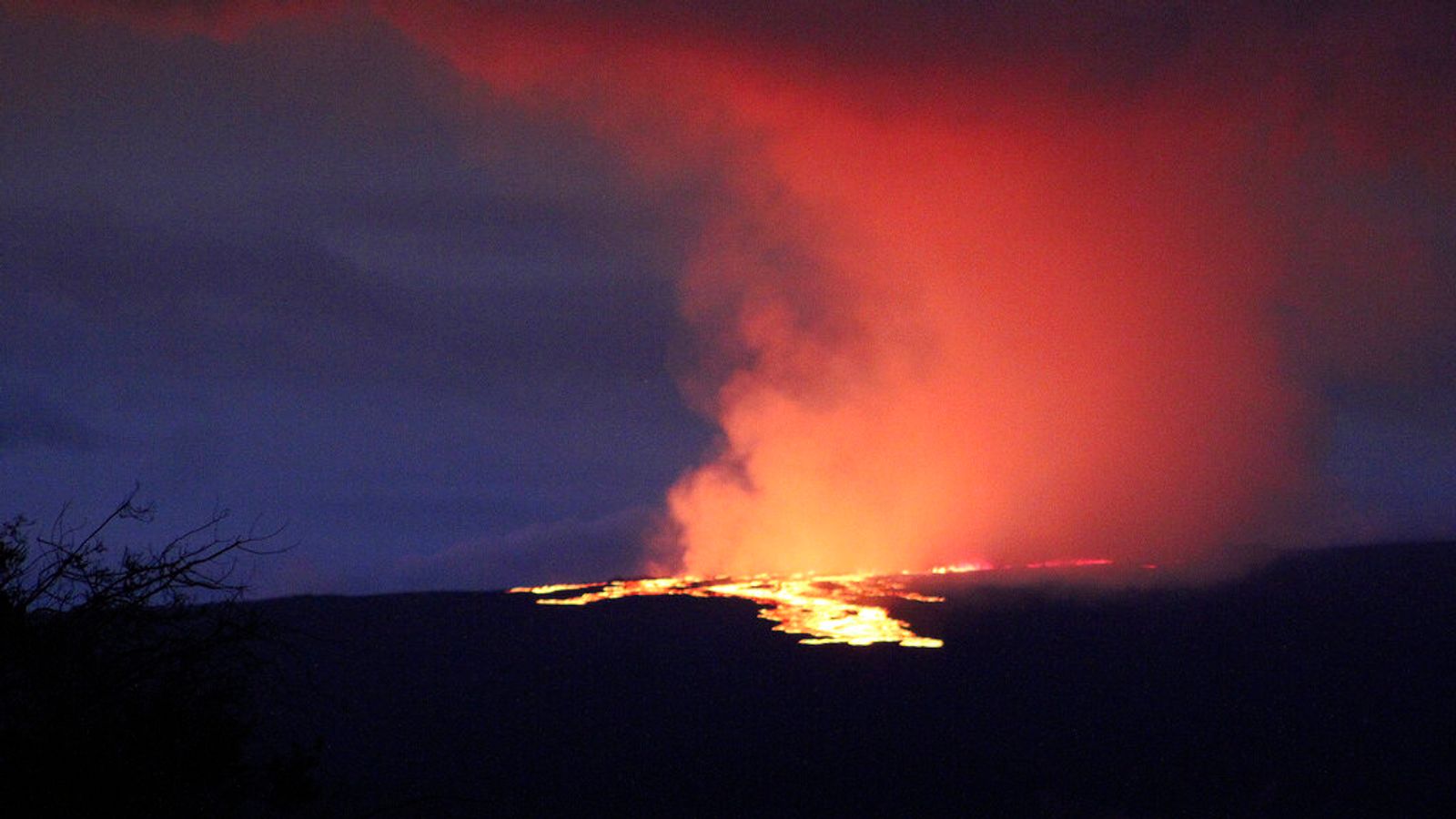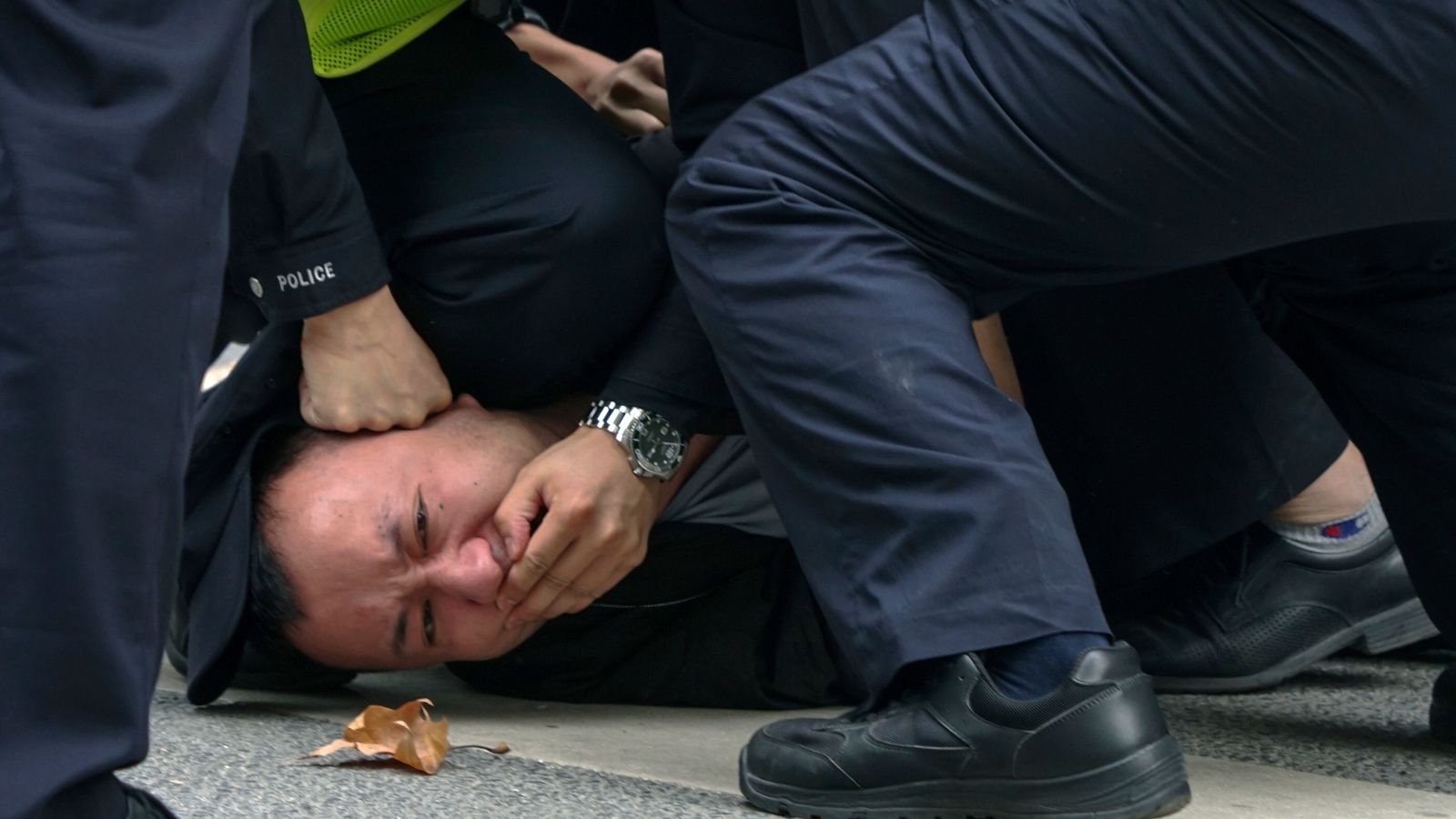Mauna Loa has begun erupting on Hawaii’s largest island, prompting officials to raise the alert level from “advisory” to “warning”.
The eruption began late on Sunday night in the summit caldera of the volcano on the Big Island, the US Geological Survey (USGS) said.
The Hawaiian Volcano Observatory (HVO) said: “Lava flows in the summit region are visible from Kona. Winds may carry volcanic gas and possibly fine ash and Pele’s hair (a type of volcanic glass) downwind”.
The agency, which is part of USGS that monitors natural disasters, has been on alert because of a recent spike in earthquakes at the summit of Mauna Loa.
It added that lava flows have been currently restricted to the summit area and do not threaten nearby communities.
Mauna Loa is the largest active volcano on the planet and covers half of Big Island.
The intervals between eruptions – of which a total of 33 have been recorded – have ranged from months to decades. It last erupted in 1984.
HVO warned that: “Based on past events, the early stages of a Mauna Loa eruption can be very dynamic and the location and advance of lava flows can change rapidly.”
Their officials are planning to operate flights over the site to assess the state of the volcano and potential hazards.
Pictures posted online have shown a red glow in the night sky from the summit.
Another US agency, the National Oceanic and Atmospheric Administration, has tweeted satellite images showing the heat from the eruption as it appeared from space, and sulphur dioxide it has been releasing.
Mauna Loa is one of five volcanoes which make up Big Island, which is the southernmost island in the Hawaiian archipelago.
At 13,679ft (4,169m) above sea level it is much larger than the neighbouring Kilauea volcano, which erupted in 2018 and destroyed 700 homes.
During a 1950 eruption, Mauna Loa’s lava travelled 15 miles (24km) to the ocean in less than three hours.










